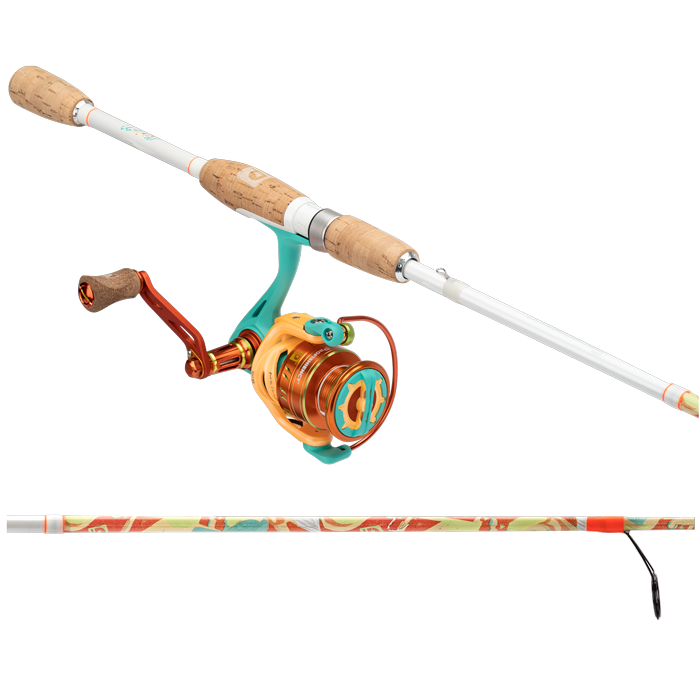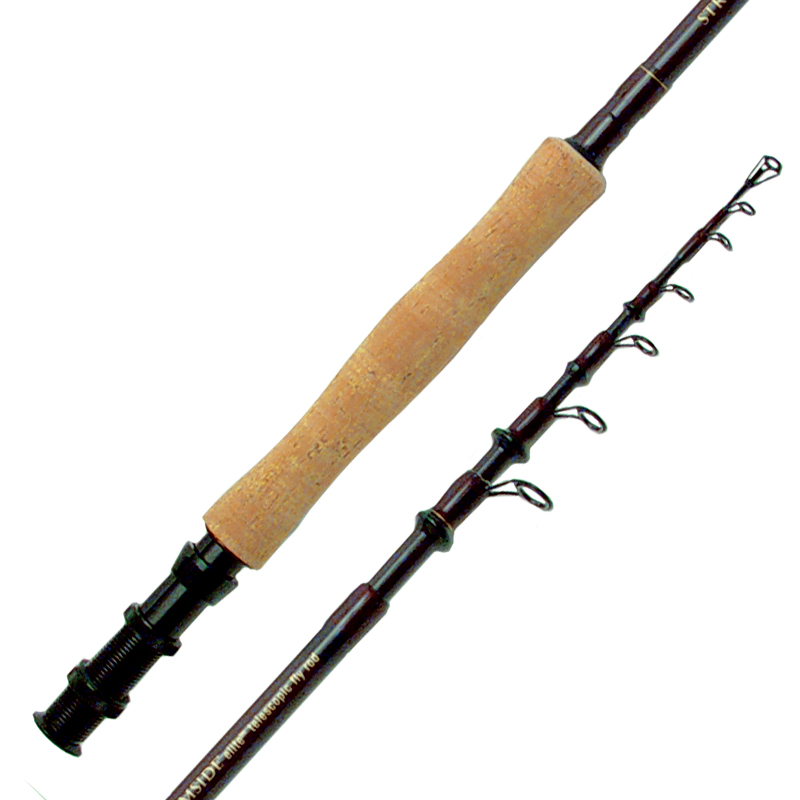Introduction to Fishing Rod Varieties
Difference in fishing rods! Selecting the ideal fishing rod is crucial to your angling success. Different rods excel in different scenarios, and making an informed choice can greatly enhance your fishing experience. Here, we explore the main types of fishing rods and their unique characteristics. Each is built to suit a specific purpose and species of fish. From iconic casting rods crafted for bass fishing to precise fly rods tailored for chasing trout, understanding these differences is key. Additionally, we’ll look at specialized options like ice fishing and trolling rods. With a variety of lengths, strengths, and reel pairings, there’s a rod to meet every angler’s needs. Prepare to delve into the fascinating world of fishing rods and discover the one that fits your style and target species the best.

Casting Rods: Features and Best Uses
Casting rods are the go-to gear for many anglers. They pair with baitcasting or spincast reels fixed onto a secure seat. You will see the line run through upwards-facing eyelets down the rod’s length. This setup is essential for accurate casting and managing the tension on various lines like monofilament, fluorocarbon, and braided types.
Anglers favor casting rods for their versatility in catching numerous fish species. Whether it’s spotted, smallmouth, or largemouth bass fishing, casting rods provide the necessary strength. They are equally effective for angling striped bass, musky, walleye, and catfish. Their lengths span from 6 to 8 feet with varying power from light to extra heavy. Thus, they support a wide bait range, from weightless lures to half-pound swimbaits.
Novices may prefer the spincast variant for its simple push-button mechanism and user-friendly grip. Such reels are ideal for light line fishing and often more affordable. On the other hand, heavier casting rods suit catfish fishing with their robust build for larger catches.
When it comes to the difference in fishing rods, understanding the best uses of casting rods is fundamental. They excel in situations where power, precision, and versatility are needed. Whether angling for bass with a variety of baits or tackling large catfish, casting rods are the reliable choice. Remember to match your rod’s power and length to the fishing situation for the best results.
Spinning Rods: Advantages and Suitable Conditions
Spinning rods are popular among many anglers for good reason. They are matched with spinning reels, which handle the line in coils. This design results in larger eyelets on the rod. The largest eyelet sits closest to the reel, with smaller ones leading up the rod. This structure is integral for smooth line flow and reducing snags.
One key advantage of spinning rods is their ease of use. They are especially suitable for beginners. This rod type is less likely to tangle, making casting more straightforward. It’s also the preferred choice for lighter lures and baits. Because less force is needed to uncoil the line, anglers find spinning rods excellent for delicate presentation of baits.
When it comes to suitable conditions, spinning rods shine in finesse situations. They are perfect when fishing in clear waters or targeting skittish fish. Ideal for vertical presentations too. Their efficient design allows for accurate drop-shotting or jigging techniques. Anglers wield spinning rods to target species like bass, panfish, and many others in freshwater.
If you’re considering what type of rod to use, think of the fishing conditions. Clear water and light baits? Spinning rods will likely serve you well. Their light line application is unmatched. In any scenario that calls for subtlety and precision, spinning rods are the go-to option. They allow for outstanding control and a gentle touch, essential aspects when finesse fishing.

The Art of Fly Fishing: Understanding Fly Rods
Fly fishing is a unique and skillful form of angling. Fly rods are specialized tools designed for this technique. Unlike other types of fishing rods, fly rods focus on casting the line rather than the lure. Let’s dive deeper into what sets fly rods apart and their use in angling.
The fly line itself is weighted, which aids in casting the nearly weightless flies. The line is thick and may float on the water’s surface. A tapered monofilament leader connects the fly line to the tiny, lightweight flies, presenting them delicately to fish.
Fly rods excel in catching species like trout, bass, and even tarpon, which are often lured by imitations of insects and other small prey. The art of fly casting requires a rhythmic motion, a skill that distinguishes it from other fishing methods. Mastery of the technique often means more effective fly fishing adventures.
Using a fly rod allows anglers to reach further with their casts and target feeding fish with precision. It’s about presenting the fly in a way that mimics natural prey, without startling the fish. Fly fishing can be incredibly rewarding and takes place in some of the most picturesque fishing environments.
For those drawn to the elegance and challenge of fly fishing, understanding the difference in fishing rods and selecting the right fly rod is a fundamental step. The right fly rod not only matches the fishing environment but also the species you’re after and your unique casting style.
Ice Fishing Rods: Design and Functionality
Ice fishing rods have a distinct design to suit the cold, tight space of ice fishing. Unlike other rods, they are short, ranging from 2 to 4 feet. This size makes it easy to manage the rod indoors or in a shelter. They are made from durable materials like graphite or fiberglass to handle the cold temperatures.
These rods come with either spinning or inline reels. The choice depends on personal preference and the fish being targeted. With smaller eyelets, these rods deliver more sensitivity. This is crucial as detecting bites can be subtle in ice fishing.
When it comes to functionality, ice fishing rods are ultra-sensitive. They must signal the lightest of nibbles beneath the ice. The rod’s sensitivity, combined with finesse techniques, can make or break an ice fishing trip.
Anglers use these rods to catch various freshwater species. Even with their small size, they can pull out large fish. The design suits vertical jigging right through the ice, a common method in ice fishing.
In summary, when looking at the difference in fishing rods, it is clear ice fishing rods are built tough. Their compact size and heightened sensitivity are tailored for the specific challenges of fishing through ice.
Trolling Rods: Specifics for Deep Water Fishing
Trolling rods are essential for deep water fishing. Unlike casting or spinning rods, they are not meant for casting baits. Instead, these rods are designed to drag baits behind a moving boat. They cover large areas to find roaming fish in deep water. Trolling rods often look like robust casting rods but have different features.
Trolling rods have long handles and are usually sturdy. Their lengths allow them to fit securely in boat-mounted rod holders. This helps to spread multiple lines out across the water. They are flexible at the tip but have a strong spine to handle the stress of trolling. These qualities help in catching large, powerful fish.
When trolling, anglers use various lines like monofilament, fluorocarbon, and braided lines. The rod’s power and action can vary based on target species. Trolling is effective for species like crappie, lake trout, and catfish. Heavier trolling setups are used for giant catfish, often with specially designed catfish rods. Trolling rods need to cope with heavy baits and the pull of big fish.
In summary, trolling rods differ from other rods by being longer, stronger, and suited for boat use. They excel in deep water fishing where casting is not feasible. Anglers seeking fish like lake trout or catfish will benefit from quality trolling rods.
Selection Tips: Matching Rods to Fishing Style and Species
When selecting a fishing rod, consider your preferred fishing style and the species you target. For bass fishing with varied lures, casting rods are optimal. They offer the strength needed for bigger fish and diverse baits. If you’re new to fishing or prefer light baits, go for spinning rods. They are less likely to tangle and are easier to manage. Fly rods are ideal for those who enjoy the rhythm of casting and the challenge of enticing visual feeders like trout. For ice fishing, choose short, sensitive rods for the subtle bites in cold conditions. Finally, trolling rods are your pick for deep water fishing where long, sturdy rods excel at dragging baits behind a boat.
When thinking about the size, action, and material of the rod, align them with your fishing technique. A heavy-duty rod with a slow action is better for big fish and sturdy fights. For finesse fishing, light-action and sensitive rods work best. The material, be it graphite for sensitivity or fiberglass for durability, also plays a role. Apart from your personal style, consider the fishing conditions. Clear water, heavy cover, deep sea, or ice – each scenario might need a different rod type. Always balance your choice with the line and lure you plan to use. This ensures your setup is cohesive and effective.
By understanding the difference in fishing rods, you equip yourself with the right tools for enjoyable and successful fishing experiences. It’s not just about the catch, but about the match between your gear and fishing aspirations.
Conclusion: Making an Informed Choice
When it comes to fishing, the right rod can make all the difference. Keep in mind the type of fish you’re after and the conditions you’ll be facing. For precision and versatility in casting, a casting rod is ideal. Opt for a spinning rod for its ease of use, especially with light lures and baits. If the charm of fly fishing calls to you, a fly rod is necessary to cast the line and mimic prey.
For the ice fishing enthusiasts, a short and ultra-sensitive ice fishing rod is your best bet. Deep water calls for the specific design of a trolling rod, perfect for trailing baits behind a boat. Remember, matching your rod to your fishing style and the species you aim to catch is critical.
Choose a rod based on your fishing technique, the typical conditions, and your personal style. The perfect balance between the rod, line, and lure will enhance your chances of a successful catch. With the right knowledge about the difference in fishing rods, you’re set to enjoy the sport to the fullest. Get out there, make an informed choice, and have a great time fishing!
